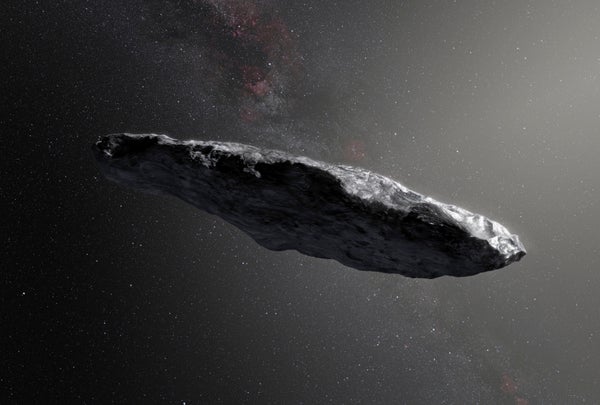After arriving at Adirondack Park on our first family vacation since the start of the pandemic, I went out for my routine morning jog. The sun poured light over my body as if it was a racehorse in need of washing. And out there I saw unexpectedly a beautiful young deer near a lake. He focused his eyes on me to verify that I pose no danger. If I had fetched my cell phone to snap a photo, he would have disappeared. I chose to enjoy the view, savoring the moment as if the deer were a transient piece of music. In such instances, rare beauty cannot be documented or else it disappears. This left no way for me to share my rare experience with my family.
Past generations may have witnessed phenomena that were never documented in a scientific way. Is it possible that we missed important scientific clues from the past? Science relies on reproducibility of results, but we might need to wait a long time before rare events will repeat.
Let us consider a particular example. Suppose the solar system had been visited by technological equipment from an extraterrestrial civilization a few million years ago—hardly impossible since the age of the Milky Way galaxy is a million times longer than our recorded history. If we found a photo album with high-resolution images from that time, we would have an affirmative answer to Enrico Fermi’s paradox: “Where is everybody?” But the absence of that evidence doesn’t mean the answer is negative. If a tree falls in the forest and there is nobody around to hear it, does it make a sound?
On supporting science journalism
If you're enjoying this article, consider supporting our award-winning journalism by subscribing. By purchasing a subscription you are helping to ensure the future of impactful stories about the discoveries and ideas shaping our world today.
One remedy is to search for surprising events in the long history of Earth. For example, two billion years after the Earth formed, the oxygen level in the atmosphere rose for an unknown reason, enabling the complex life that currently thrives on Earth. Even more surprisingly, intelligent life appeared abruptly in the last one thousandth of the Earth’s history. Both events probably have a natural origin, but other explanations are possible.
A better approach is to search the sky for technological relics from distant civilizations. The newly announced Galileo Project aims to image objects near Earth whose nature is unknown, such as unidentified aerial phenomena (UAP) or anomalous interstellar objects like ‘Oumuamua. It makes little sense to do otherwise. Choosing not to look through the windows doesn’t mean your neighbors aren’t there.
A common mistake is to assume that our environment was choreographed with us in mind. Instead, we might just be spectators of a play designed for other actors, just as I was in the natural environment of the Adirondack deer. Any technological equipment that the Galileo Project finds could have been sent millions of years ago, long before humans existed. The probes could have been sent towards Earth as a habitable destination on its own merit.
The Galileo Project will ignore objects that are of most interest to national security, such as drones or airplanes which are human-made. Instead, it will focus on the “other” category in the UAP report that was delivered to Congress on June 25, 2021.
To justify my engagement in the Galileo Project as part of my day job at Harvard University, I explained that it will assemble and interpret data from telescopes. Rather than focusing on distant objects as astronomers often do, our research team will track nearby objects that move fast on the sky. There is no minimum distance for an object to be considered astronomical, especially if it originated from outside the solar system before arriving to our vicinity.
The thousands of supporting e-mails I received in the days following the announcement of the Galileo Project show unequivocally that the idea of imaging the unknown inspires people. Bringing the study to the mainstream of astronomy will attract new funds and talent to science. There is no downside to seeking evidence; it is a win-win proposition that will teach us something new. Even if ‘Oumuamua is a natural object, like a never-seen-before hydrogen iceberg, we will learn that there must be nurseries of interstellar objects that are very different from the solar system. In leading the Galileo Project, I act as former farm boy who has preserved his childhood curiosity. I understand the pushback from those who do not share my perspective, but cherish the company of like-minded explorers and donors.
The Galileo Project is a fishing expedition. We use hooks in the form of telescopes without assuming what they might catch. The fundamental innovation is that we chose to look through telescopes for answers. This is the biggest lesson we learned from Galileo Galilei’s debate with the philosophers who refused to look through his telescope.
Recently, a philosopher published an article that uses philosophical reasoning to argue that ‘Oumuamua could not have been technological in origin. This suggests that looking through telescopes for answers is not as trivial as it may seem four centuries after Galileo.
This is an opinion and analysis article; the views expressed by the author or authors are not necessarily those of Scientific American.
